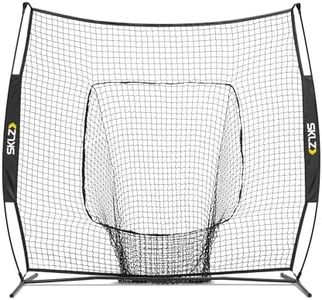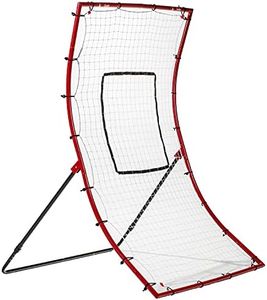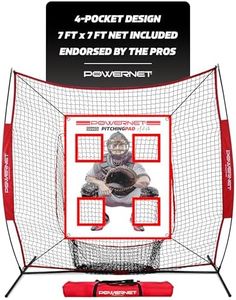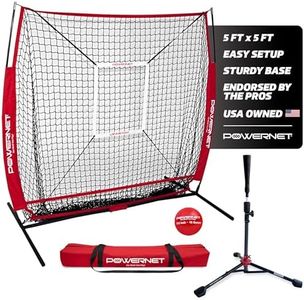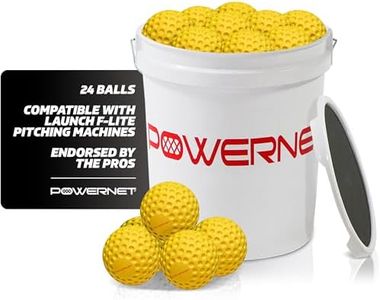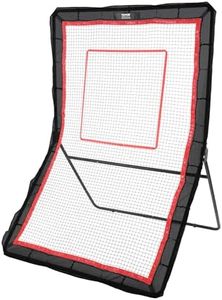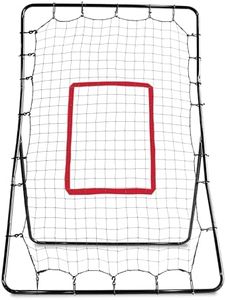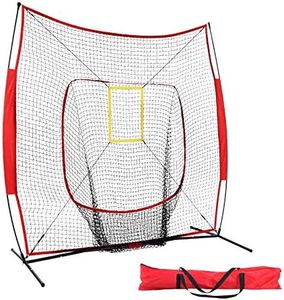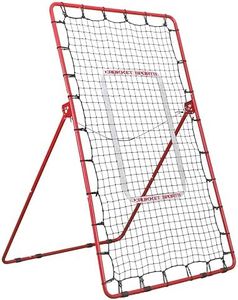We Use CookiesWe use cookies to enhance the security, performance,
functionality and for analytical and promotional activities. By continuing to browse this site you
are agreeing to our privacy policy
10 Best pitchback
From leading brands and best sellers available on the web.Buying Guide for the Best pitchback
When it comes to buying a pitchback, it’s important to think about your goals, where you’ll use it, and who will use it. Pitchbacks are great for practicing throwing, catching, and even fielding skills in sports like baseball, softball, and soccer. Picking the right one will make practice more productive, enjoyable, and safe. Before you buy, consider your available space as well as portability, assembly, and durability needs.Size and Surface AreaThis refers to the dimensions of the pitchback’s net or rebound area. The size affects how easy it is to hit the target and the type of practice you can do. Smaller surfaces require more accuracy and are good for advanced players, while larger surfaces offer more forgiveness and are great for beginners or group use. Think about the age and skill level of the primary user—youth players or those developing basic skills benefit from a bigger target, while experienced players looking to refine accuracy might prefer a smaller one.
Frame MaterialThe frame material determines the pitchback’s durability and weight. Common materials include steel, aluminum, and sometimes plastic. Steel frames are sturdy and stable, good for regular heavy use, but can be heavier. Aluminum is lighter and still fairly strong, making it easier to move. Plastic is lighter but generally less durable, suitable for light or occasional use. Consider how often and where you’ll use the pitchback—frequent, outdoor use usually calls for steel or aluminum, while occasional backyard play may be fine with lighter options.
Net QualityNet quality refers to the material and the way the netting is constructed. A high-quality net resists wear from weather and frequent ball impacts. Look for nets made from weather-resistant nylon or polyethylene for outdoor use. Thicker, tightly-woven nets last longer. If you plan to practice a lot or leave your pitchback outdoors, invest in a robust net for fewer replacements.
AdjustabilityAdjustability means whether you can change the angle of the pitchback’s surface to alter how the ball rebounds. Some models offer multiple angle settings, which lets you practice different types of returns like grounders, pop flies, or chest-high catches. This feature is important for players wanting to work on different skills, so think about whether versatility or a single type of practice matters most for you.
Portability and StoragePortability covers how easy it is to move or disassemble the pitchback, which is important if you have limited storage or plan to bring it to different locations. Lightweight models or those that fold flat can be moved and stored easily, while bulkier models might need a fixed space. Think about your storage space and whether you’ll need to transport the pitchback frequently.
Assembly DifficultyThis refers to how easy or complicated it is to put together the pitchback after purchasing. Some come nearly ready to use, while others require more time and tools for assembly. Simpler models may be more convenient if you aren’t comfortable with assembly or want to start using it right away. If you’re handy and don’t mind extra steps for added stability, you might opt for a model with a longer setup process.

